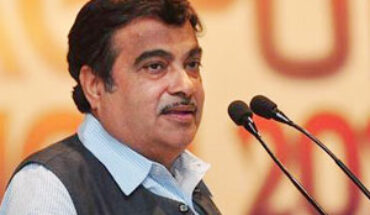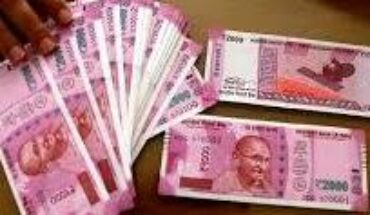Prime Minister Narendra Modi today said that Asia still faces wide ranging disparities in access to education, healthcare, financial services and formal employment opportunities, and the “Asian Infrastructure Investment Bank” (AIIB) – which has resulted from collaborative efforts of Asian countries to provide a better tomorrow to people — is poised to play a critical role in Asia, where investments by AIIB in sustainable infrastructure can impact the lives of billions of people.
Speaking at the opening ceremony of the AIIB Third Annual Meeting here, Modi said “As developing countries, we share similar challenges. One of them is to find resources for provision of infrastructure. I am happy that the theme of this year’s Meeting is “Mobilizing Finance for Infrastructure: Innovation and Collaboration. Regional multi-lateralism through institutions such as AIIB can play a central role in helping to raise resources.”
“Sectors such as energy and power, transportation, telecom, rural infrastructure, agriculture development, water supply and sanitation, environment protection, urban development, and logistics require long term funds. The interest rates on these funds need to be affordable and sustainable. In a short period, AIIB has approved 25 projects in a dozen countries with a total financing of over 4 billion US Dollars and this is a good beginning,” he said.
“With committed capital of 100 billion dollars and huge need for infrastructure in member countries, I take this opportunity to call upon AIIB to expand from financing 4 billion dollars, to 40 billion dollars by 2020 and 100 billion dollars by 2025. This would require simpler processing, and faster approval, besides high quality projects and robust project proposals.”
“I believe that India and AIIB are both strongly committed to making economic growth more inclusive and sustainable. In India, we are applying novel Public Private Partnership models, Infrastructure Debt Funds, and Infrastructure Investment Trusts to fund infrastructure. India is trying to develop brownfield assets as a separate asset class for infrastructure investment. Such assets, having passed the stages of land acquisition and environment and forest clearances, are relatively de-risked. Hence, for such assets, institutional investment from pension, insurance and sovereign wealth funds are likely to be more forthcoming.”
“Another initiative is the National Investment and Infrastructure Fund which aims to channel investments from both domestic and international sources into infrastructure. This Fund has received a boost with AIIB committing 200 million US Dollars for investment.”
“India is one of the most investor-friendly economies in the world where investors look for growth and macro-economic stability, political stability and a supportive regulatory framework to ensure protection of their investment. From the point of larger scale of operations and higher value addition, an investor is also attracted by a large domestic market size, availability of skilled labour and good physical infrastructure. On each of these parameters, India is well placed and has performed very well,” Modi said, while highlighting India’s experiences and achievements.
“India has emerged as a bright spot in the global economy which is driving global growth as well. With a size of US$ 2.8 trillion, it is the seventh largest economy in the world and third largest in terms of purchasing power parity. In the fourth quarter of 2017, we grew at 7.7 per cent. In 2018, we are projected to grow at 7.4 per cent.”
“Our macro-economic fundamentals are strong with stable prices, a robust external sector and a fiscal situation firmly in control. Despite rising oil prices, inflation is within the mandated range. The Government is firmly committed to the path of fiscal consolidation and Government debt as percentage of GDP is consistently declining. India has achieved a rating upgrade after a long wait.”
“The external sector remains robust. Our foreign exchange reserves of more than 400 billion US dollars provide us enough cushion. Global confidence in India’s economy is rising. Total FDI flows have increased steadily – more than 222 billion US dollars have been received in the last four years. As per UNCTAD’s World Investment Report, India continues to be one of the top FDI destinations in the world.”
“From the point of a foreign investor, India counts as an extremely low-risk political economy. The Government has taken a number of steps to boost investment. We have simplified rules and regulations for businesses and undertaken bold reforms. We have provided investors an environment which is efficient, transparent, reliable and predictable. We have liberalized the FDI regime. Today, most sectors are on automatic approval route.”
“The Goods and Services Tax is one of the most significant systemic reforms that our country has undergone. It works on the “One Nation – One Tax” principle. It reduces tax cascading, increases transparency, and adds to logistics efficiency. All of this makes it easier for the investor to do business in India. These and other changes have been noticed by the global fraternity. India has jumped 42 places in three years to enter the top hundred in the World Bank’s Ease of Doing Business Report 2018.”
“The size and growth of the Indian market hold much potential. India’s per capita income has doubled in the last ten years. We have over 300 million middle class consumers. This number is expected to double in the next ten years. The size and scale of requirement in India gives the added advantage of economies of scale for investors. For example, the housing programme in India targets ten million houses in urban areas. This would be more than the total requirement of a lot of countries taken together. Therefore the use of new technology in house construction would have added advantage, if tried in India.”
“Another example of scale would be the Renewable Energy Programme in India. We have set a target to construct capacity of 175 Giga Watt of renewable energy by the year 2022. Of this, the solar energy capacity will amount to 100 Giga Watt. And we are well on course to exceed these targets. We have added more capacity to renewable energy than conventional energy in 2017. We are also making collaborative efforts to mainstream solar energy in the form of an International Solar Alliance. The founding conference of the Alliance was held in New Delhi earlier this year. The Alliance aims at a solar capacity of 1000 Giga Watt with an investment of one trillion US Dollars by 2030.”
“India is working on e-mobility. The challenge before us is of technology, particularly with respect to storage. We will be hosting a global mobility conference this year. I hope that this will help us in moving forward.”
“In India, we are upgrading connectivity at all levels. The “Bharatmala” scheme is aimed at improving road connectivity by constructing national corridors and highways. The “Sagarmala” project has been undertaken for boosting port connectivity, port modernization and port-linked industries. Dedicated Freight Corridors are being developed to mitigate the congestion of our railway network. The “Jal Marg Vikas” project would augment capacity of navigation on National Waterways for internal trade carried through inland water transport. Our UDAN scheme works towards regional airport development and improved air connectivity. An area which I believe still remains untapped and needs attention is the possibility of utilising India’s large coastline for transportation and freight movement.”
“While we talk about the conventional concept of infrastructure, I must mention some of the modern day infrastructure on which India has worked. Bharat Net is targeted at providing last mile internet connectivity in the country. India has over 460 million internet users and 1.2 billion mobile phones in use. We are promoting the use of digital payments. Our United Payments Interface system or UPI along with BHIM App and RuPay Card has shown the true potential of digital economy in India. Through the UMANG App, more than 100 public services have been made available to the citizens through their mobile phone. Our Digital India Mission aims to bridge the rural-urban digital divide.”
“Agriculture is the lifeline of the Indian economy. We are promoting investments in warehouses and cold chains, food processing, crop insurance and allied activities. We are promoting micro-irrigation to ensure optimal use of water with increased productivity. I would like AIIB to look into potential investment opportunities in this field and associate with us.”
“We aim to provide every poor and homeless household a house with toilet, water and electricity by the year 2022. We are also looking at various strategies for effective waste management. We have also recently launched Ayushman Bharat, our National Health Protection Mission. This will provide a benefit cover of over 7000 dollars annually to more than 100 million poor and vulnerable families. The resulting expansion of healthcare facilities will lead to the creation of a large number of jobs. This will also promote the production of high quality medicines, consumables and other medical technology equipment. Jobs will also be created for ancillary activities including call centres, research and evaluation and IEC activities. The entire healthcare industry will receive a boost.”
“Moreover, with the Government assuring healthcare benefits, the savings of a family can now be better used for other consumption and investment. This increased disposable income in the hands of a poor family would lead to increased demand in the economy. I see great untapped potential in this for investors.”
“The Indian story of economic resurgence closely mirrors that of many other parts of Asia. Now, the continent finds itself at the centre of global economic activity and has become the main growth engine of the world. In fact, we are now living through what many have termed the ‘Asian Century’. A ‘New India’ is rising. It is an India that stands on the pillars of economic opportunity for all, knowledge economy, holistic development, and futuristic, resilient and digital infrastructure. We look forward to our continued engagement with our development partners including AIIB.”






